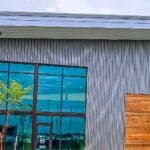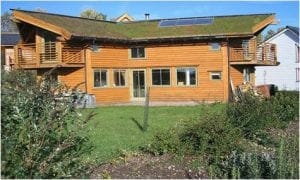
New Techniques in Environmentally-Friendly Buildings
Environmentally-friendly buildings are structures that are resource-efficient throughout their life-cycle, throughout the processes of design, construction, operation, maintenance, renovation, and eventual demolition. Environmental or “green” buildings are more than just a passing trend. They represent a paradigm shift in the field of architecture and a more sustainable way to secure the future of urbanization.
Start your sustainable building journey by becoming LEED-certified. Consult our LEED implementation plan experts for any help you may need.
Goals of Environmentally-Friendly Buildings

Although new environmentally-friendly building techniques are proposed and tested every year, they all share common objectives for reducing their overall impact on human health and nature. Eco-friendly buildings should serve the following purposes:
- Efficiently make use of air, water, and other resources
- Protect human health and improve productivity
- Reduce pollution and waste
- Save money on operational costs
- Feature an aesthetically-pleasing design
Environmentally-Friendly Building Techniques
Energy efficient insulation is incredibly important to prevent air gaps and stop drafts, because around 50% of a building’s energy escapes through heating and cooling processes. Thick exterior walls, high efficiency windows, and caulked gaps should do the trick. To save energy, builders should consider using Energy Star equipment for heating, cooling, water heaters, appliances, and light fixtures.
Whenever possible, buildings should use reclaimed lumber and recycled plastics. Builders should also utilize materials that have long life spans so that they don’t need to be thrown away or replaced for many years. Exterior spaces around buildings should be designed with permeable materials to allow rainwater to soak into native plants, and water can be conserved with low-flow toilets and water-saver faucets.
Cutting-Edge New Building Materials
The latest trends in environmentally-friendly buildings revolve around tight seals to efficiently block weather conditions and the use of recycled materials wherever possible. The initial cost materials can be high, but conservation experts insist that energy efficient materials, like these, will lead to significant cost savings over time.
- Recycled steel
- Insulated concrete forms
- Plant-based polyurethane rigid foam
- Straw bales
- Cool, reflective roofing
- Structural insulated panels
- Recycled wood
- Plastic composite lumber
- Low-E (emissivity)windows
- Vacuum insulation panels
Assessment and Regulation
Due to the increased interest in environmentally-friendly building concepts, numerous regulatory organizations have developed standards, codes, and rating systems for buildings. In some regions, codes are actually written so that local governments can adopt them as laws and reduce widespread environmental impacts. The United States and Canada use the LEED rating system, while the United Kingdom uses GREEAM and Japan uses CASBEE.
As dictated by the relevant regulatory systems, these are a few of the most sustainable buildings in the United States:
- Centers for Disease Control Division of Laboratory Sciences – Atlanta, Georgia
- Wayne L. Morse U.S. Courthouse – Eugene, Oregon
- Lake View Terrace Library – Lake View Terrace, California
- Austin Resource Center for the Homeless – Austin, Texas
- Factor 10 House – Chicago, Illinois
Photo credit: W.L Tarbert via WikiMedia



